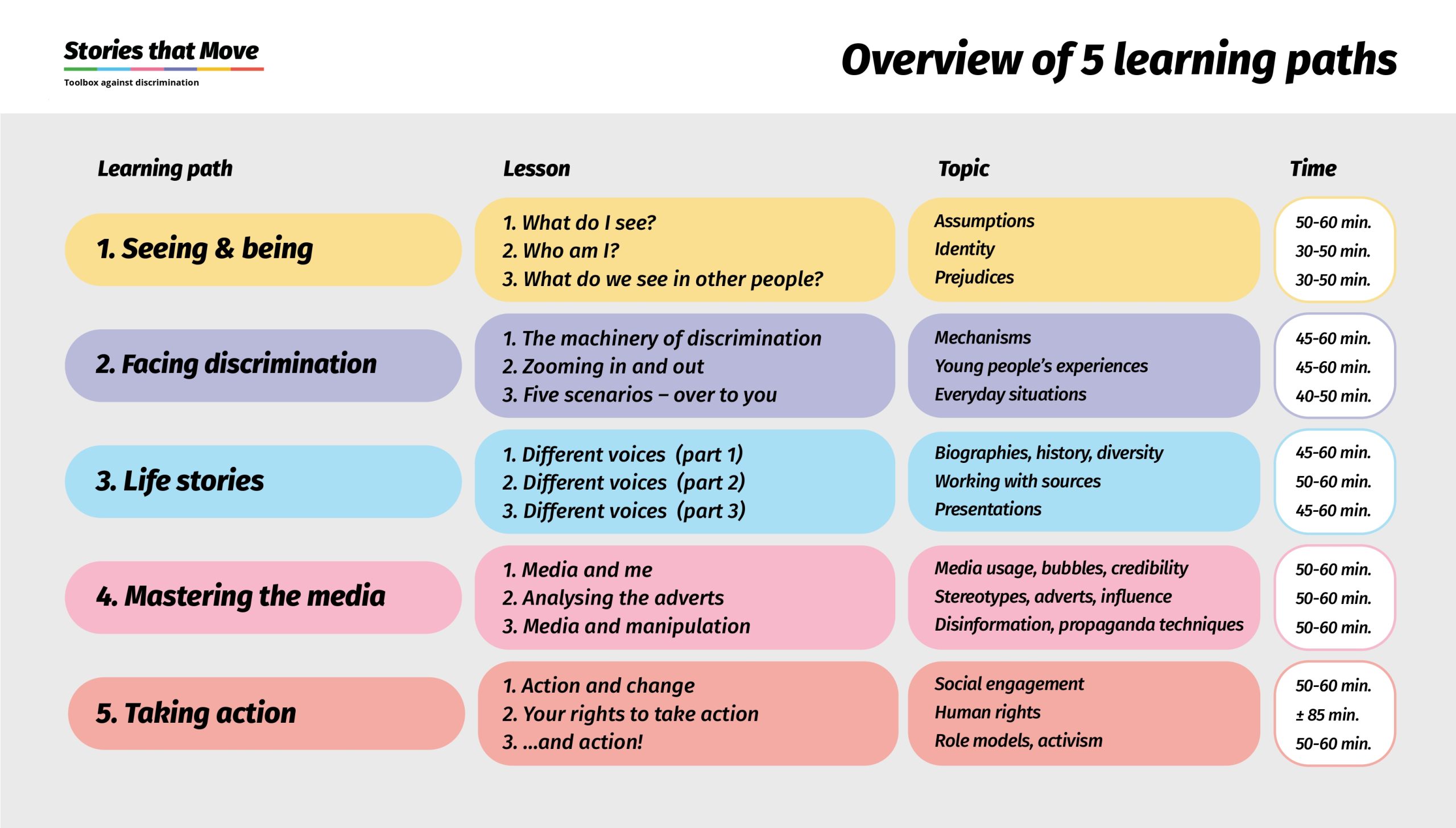Stories That Move
The online toolbox about diversity and discrimination
 English
EN
English
EN
 EnglishEN
EnglishEN DeutschDE
DeutschDE NederlandsNL
NederlandsNL MagyarHU
MagyarHU PolskiPL
PolskiPL SlovenčinaSK
SlovenčinaSK УкраїнськаUK
УкраїнськаUK EspañolES
EspañolES CatalàCA
CatalàCAThe online toolbox consists of five learning paths, each exploring a topic to do with discrimination and diversity. These are complete modules for educators to build their lessons around. At the heart of each path are short film clips in which young people talk about their experiences, both positive and negative, including instances of exclusion and discrimination. We blend online and offline learning, incorporating group activities to help learners share their thoughts and ideas.

1. Seeing and being
This path explores how we see ourselves and others. We reflect on what identity means to individuals, and emphasise the value of diversity.
2. Facing discrimination
Here we seek to understand how prejudices function, and examine examples of antisemitism, racism and other forms of discrimination that young people face.
3. Life stories
This path focuses on the personal stories of individuals from various historical periods, helping learners reflect on discrimination past and present.
4. Mastering the media
We look at how prejudices and hate speech are used in advertising and propaganda, online and offline, and invite learners to explore their relationship with the media.
5. Taking action
This path asks learners to reflect on what taking action could look like, and explores some of the youth initiatives under way across Europe.
We’ve put these learning paths together to help, not limit, you. You can decide which paths and which videos are best suited to your learners and your curriculum. However, there is a sequence to the modules that helps create a strong learning curve.
When using the tools and creating your own lessons, keep in mind the pedagogical approaches the resources are based on. We recommend a slow and considered learning process rather than jumping straight to the big, complex questions.
back to top